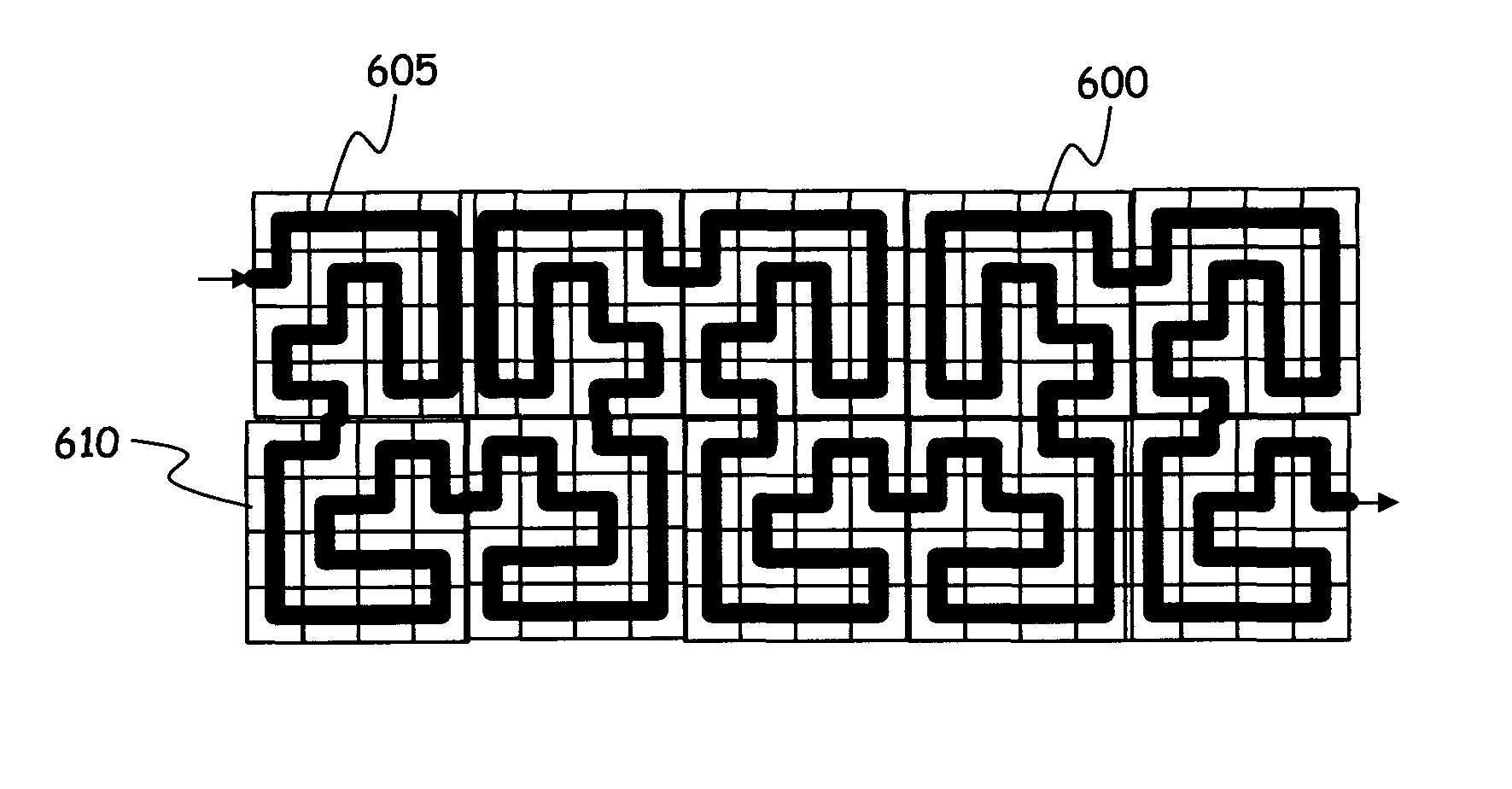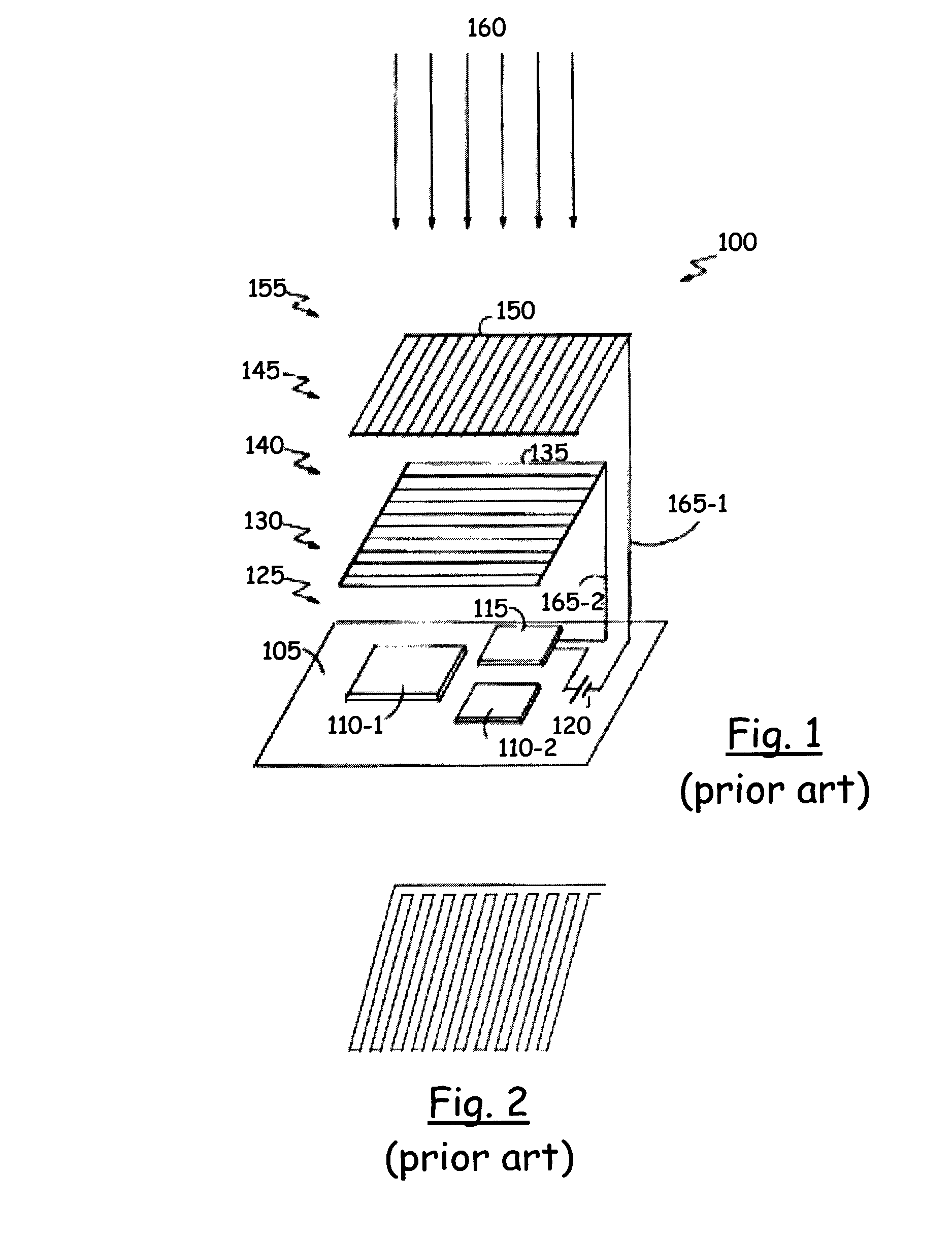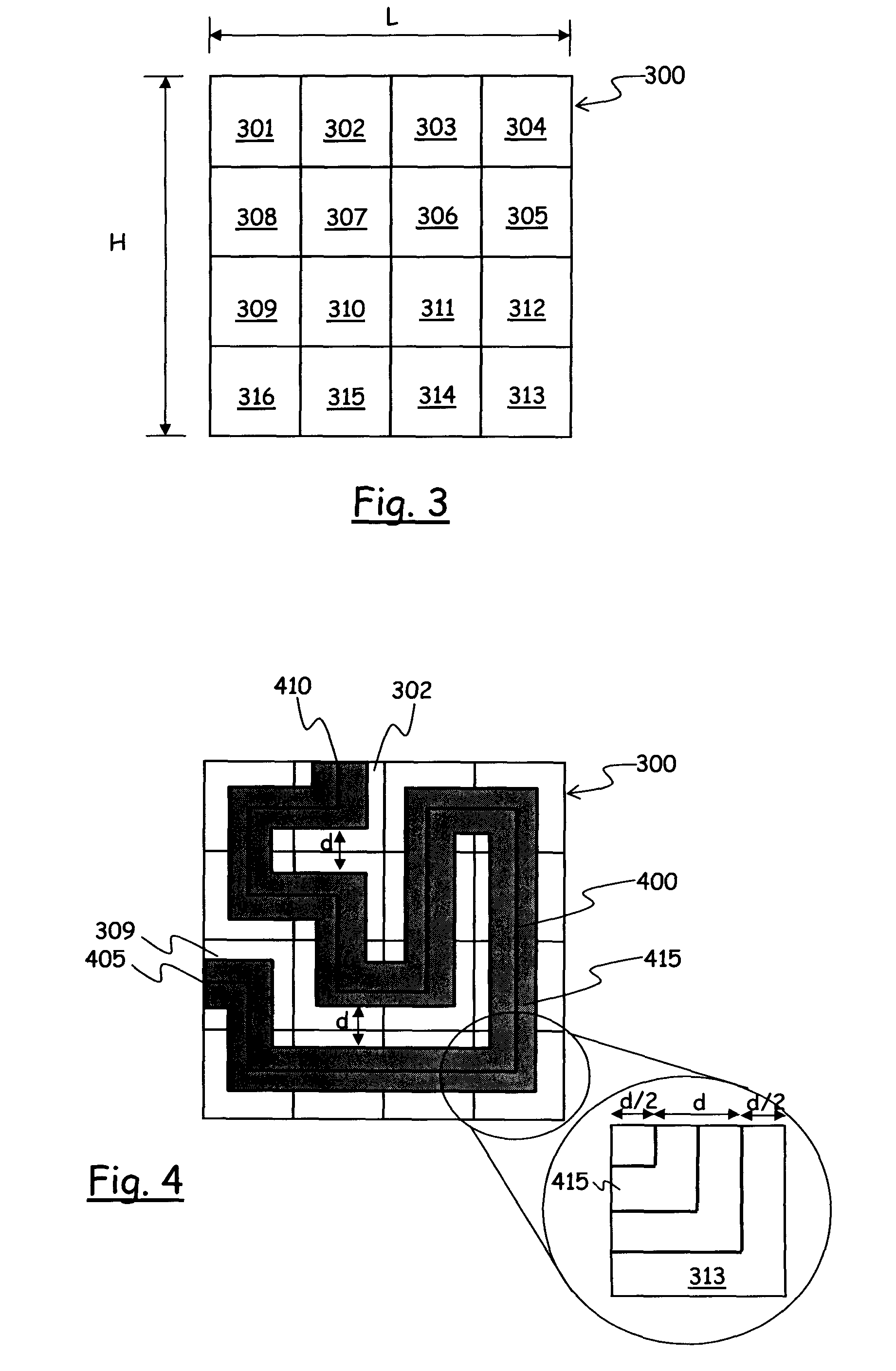Tamper-proof structures for protecting electronic modules
a technology for electronic modules and tamper-proof structures, applied in the direction of conductive pattern formation, burglar alarm mechanical actuation, instruments, etc., can solve the problems of a large gap in the security fence, unsatisfactory current designs of tamper-proof structures, etc., and achieve the effect of increasing the robustness jeopardizing the effectiveness of the tamper-proof structur
- Summary
- Abstract
- Description
- Claims
- Application Information
AI Technical Summary
Benefits of technology
Problems solved by technology
Method used
Image
Examples
Embodiment Construction
)
[0045]As discussed in the foregoing, conventional approaches adopted in the design of tamper-proof structures calls for using pluralities of linear, parallel and relatively long lines of electrically conductive material, possibly providing two or more stacked-up layers of such conductive lines, with the lines in one layer extending orthogonally with respect to the lines in the other layer, as depicted in FIGS. 1 and 2 described in the foregoing.
[0046]The conductive line patterns obtained in the conventional way are highly predictable, and as such they are not very robust against tampering attacks.
[0047]According to the present invention, the concepts and properties of mathematical entities known as space-filling curves are exploited in order to design highly-unpredictable patterns of signal lines that are adapted to create robust tamper-proof fences to be embedded in tamper-proof structures for, e.g., electronic modules packages.
[0048]From the mathematical viewpoint, an N-dimension...
PUM
| Property | Measurement | Unit |
|---|---|---|
| structure | aaaaa | aaaaa |
| volatile | aaaaa | aaaaa |
| electrical properties | aaaaa | aaaaa |
Abstract
Description
Claims
Application Information
 Login to View More
Login to View More - R&D
- Intellectual Property
- Life Sciences
- Materials
- Tech Scout
- Unparalleled Data Quality
- Higher Quality Content
- 60% Fewer Hallucinations
Browse by: Latest US Patents, China's latest patents, Technical Efficacy Thesaurus, Application Domain, Technology Topic, Popular Technical Reports.
© 2025 PatSnap. All rights reserved.Legal|Privacy policy|Modern Slavery Act Transparency Statement|Sitemap|About US| Contact US: help@patsnap.com



